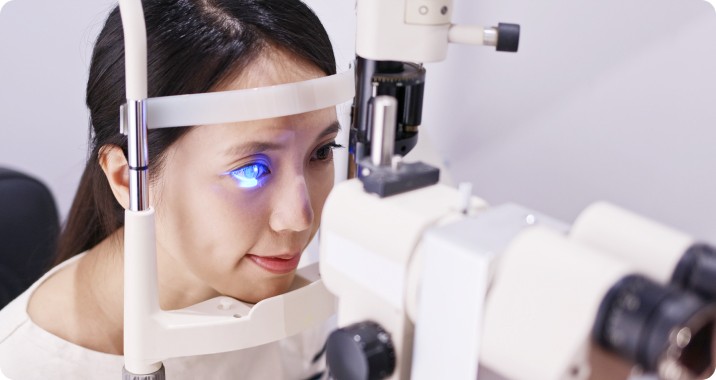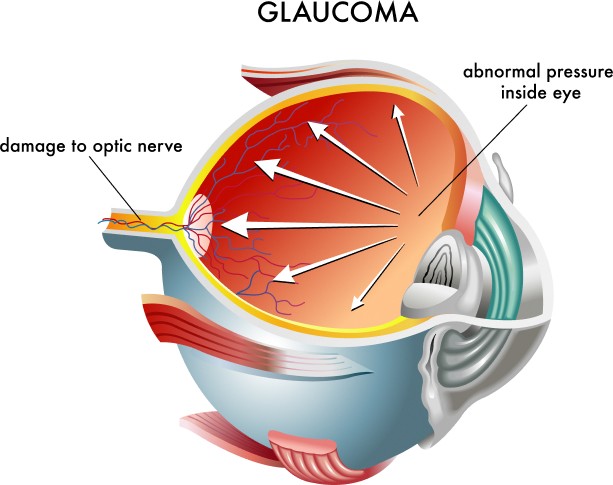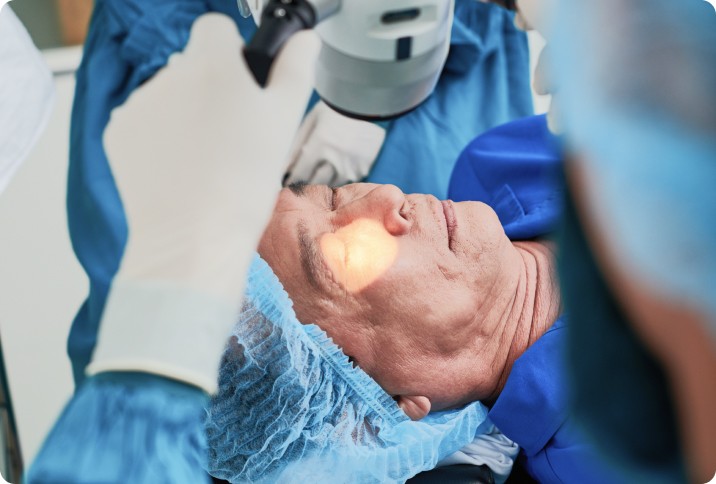What is Glaucoma?
Glaucoma is a group of eye diseases with characteristic damage to the optic nerve resulting in permanent loss of vision. The fluid pressure within the eye ( intra-ocular pressure) is elevated in most, but not all, of these diseases. Fluid pressure rises as a result of imbalance between the production and drainage of the fluid. When the fluid pressure exceeds the level that the optic nerve can tolerate, the optic nerve suffers damage. The eye pressure at which damage occurs varies between different individuals.
Damage to the optic nerve usually causes loss of vision in the periphery so that it is not noticeable in early stages. Central vision remains normal till late in the disease. Patients often do not experience any pain, redness, tearing or blurring of vision till the disease is very advanced and most of the vision is irreversibly lost. Therefore, Glaucoma is often called the “Silent Thief of Sight”.


Glaucoma occurs in about 3% of the population but accounts for more than one-third of blindness in Singapore. It is the commonest cause of irreversible blindness, with more than 67 million cases worldwide. Half of the people with glaucoma do not know they have the disease. The disease cannot be prevented or cured but it can be controlled to prevent blindness. The incidence of glaucoma increases with age and can reach 10% among those aged 70 and above.
The risk factors for glaucoma include:
- Age – your risk of glaucoma increases as you get older especially beyond 60 years old. We encourage all persons over 45 to undergo regular eye examinations to identify early onset of eye diseases.
- Ethnicity – Asians are more likely to suffer from angle closure glaucoma than other ethnic groups.
- Family history
- High fluid pressure of the eye
- Chronic diseases – You are at increased risk if you have diabetes mellitus or high blood pressure.
- Eye injuries or previous eye surgery
- Use of corticosteroid medications
- Short-sightedness (myopia) is a risk factor for open angle glaucoma
- Long-sightedness (hyperopia) is a risk factor for angle closure glaucoma

Glaucoma is diagnosed through examination of the eyes which includes measurement of the fluid pressure of the eye and careful examination of the optic nerve at the back of the eye to identify damage that has occurred. The patient’s visual fields are tested to assess for loss of vision in the peripheral fields. This involves using a machine that checks if a patient can see spots of light of different brightness in multiple locations within the eye. Additional imaging tests are often done to assess the amount of damage the optic nerve has suffered.

Glaucoma is a chronic disease that cannot be cured but it can be treated effectively and controlled to prevent further vision loss. Glaucoma can be treated with the following modalities:
- Eye drops
- Oral medications
- Laser
- Filtration surgery
- Drainage implants
The aim of treatment is to lower the eye pressure to a level that the optic nerve will not suffer damage. This will prevent blindness and ensure remaining vision is preserved. While doctors often suggest using eye drops as the first line of treatment, the choice of modality depends on the type of glaucoma and the severity of the patient’s disease. After instituting treatment, it is essential that the patient returns regularly to see his doctor so that the response to treatment can be assessed. It may be necessary to make changes to the treatment regime if the intraocular pressure has not been adequately reduced or an adverse reaction has occurred.



